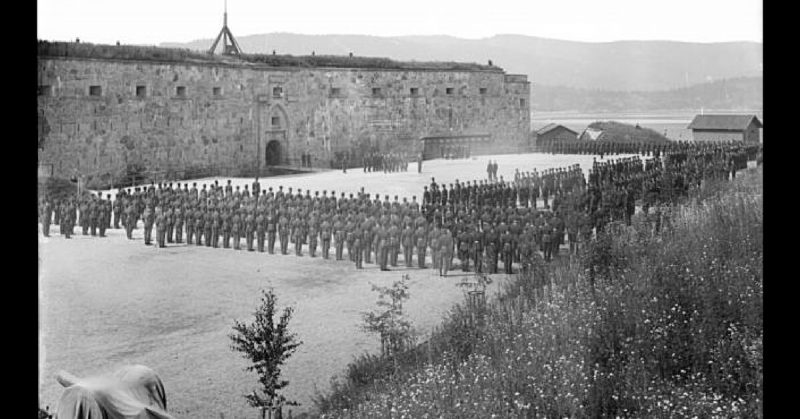It was a chilly April day in 1940 when the Phoney War ended for Norway. Snow still sat on the hills around Drøbak Sound, just south of Oslo. On that day, Norway scored a dramatic victory against their first major enemy in over 100 years.
April 8 began as usual at the Oscarsborg fortress in Drøbak. On the 2nd they had received new conscripts. Their day started with morning exercises, followed by training and instruction. A sense of urgency had crept into the recruits; they knew the war was coming, but no one knew when. There had been rumors of an invasion fleet, although the government declared neutrality. The fortress and the Norwegian military had limited communication with each other and rumors abounded.
That night intelligence was received of an unidentified ship that had fought through the outer defenses at Oslofjord. Oberst Birger Eriksen, in command of Oscarsborg, knew something was up. He could not initiate combat without provocation, but he was not going to be caught unprepared. He called Kommandørkaptein Andreas Anderssen and asked the old sailor to go to the fortress.
Anderssen was a retired naval officer who lived in Drøbak and had spent many years of his life in command of the torpedo battery at Oscarsborg.
At around 0400 on April 9, six ships came into view. Oberst Eriksen gave the command to load the three guns of the main battery. Three 562 lb high-explosive rounds were loaded into the 28cm German built cannons. Primed and ready, each gunner stood at his station, waiting for the order.
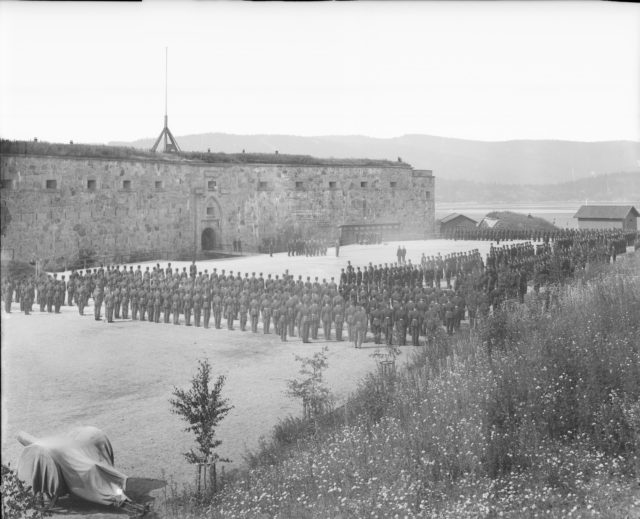
Eriksen knew his actions could have grave consequences. The ships approaching him had attacked Norwegian vessels, but his nation was officially neutral. If he fired on a ship without first firing a warning shot, he could be court martialled or spark a war accidentally; which was exactly what Norway was trying to avoid. Alternatively, if the approaching ships were belligerent, it could cost the lives of the men defending the fort.
By 0421 he had made up his mind. The lead ship was at very close range as he calmly gave the order to fire. Steel and high explosives soared through the air.
Regardless of the legality of the attack, the shells hit their mark. The first shell struck just forward of the aft mast and the second knocked out the ship’s forward turret. Both started fires which began spreading throughout the warship.
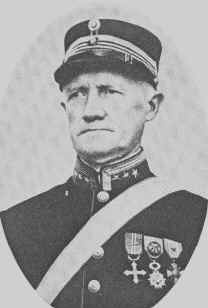
Those were the only shells those guns fired. They were manned, not by crack gun crews, but by a mishmash of trained artillerymen, noncombatants, and conscripts. There was no time to fire the third gun, which sat loaded but without a crew.
Their target was still steaming north towards Oslo. Two more batteries of smaller 57mm cannons, opened up, suppressing the enemy’s light artillery until machine gun fire from the warship began pouring directly into the fortress gun emplacements.
Suddenly, while fires raged, and cannons roared, a song could be heard over the din. The mystery ship was singing “Deutschlandlied,” the German national anthem. Signals from the minesweeper Otra confirmed the ships were from the German invasion fleet. The rumors had been confirmed.
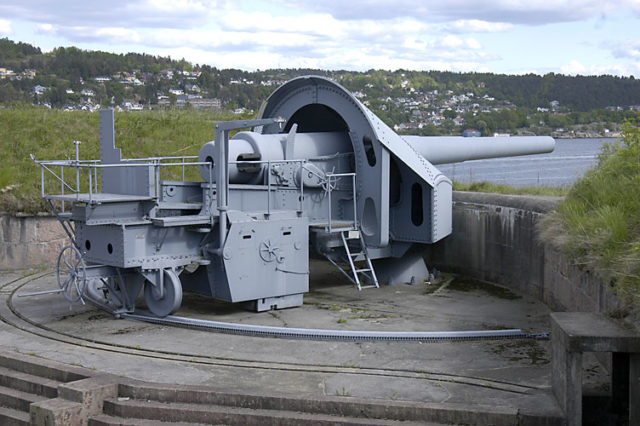
As the lead ship, identified as KMS Blücher, a German heavy cruiser, continued, she came into the sights of the 61-year-old Kommandørkaptein Anderssen’s torpedoes. Those torpedoes were around 40 years old and had been made in Austria-Hungary. They had only ever been test fired. In a three torpedo salvo, Anderssen tore a massive hole in the side of the Blücher, knocking out her engines, and flooding her. As the ship sunk, men flung themselves into the chilly waters of the fjord and swam desperately towards the shore. Seeing their lead ship flounder, explode, and sink, the remaining ships retreated.
The Norwegians had done the impossible. With only a week of training, their crew had held off one of the most advanced warships afloat. To make the victory even sweeter, they suffered no casualties. The Germans, on the other hand, lost a powerful heavy cruiser, 650-800 dead, approximately 50 wounded, and around 1000 were taken prisoner.
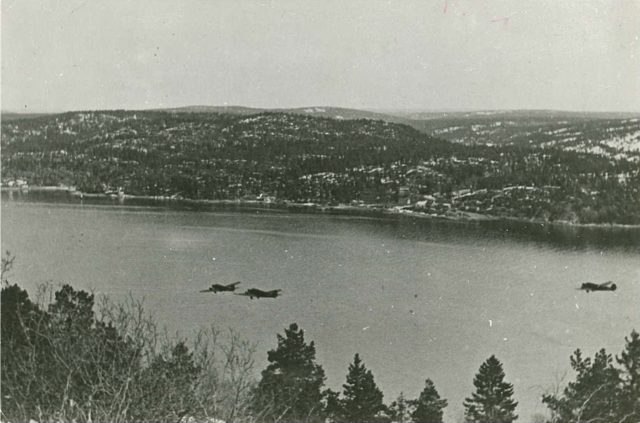
The Norwegian victory was short lived as, unbeknown to Eriksen, the Blücher was only the first step in the invasion. Oscarsborg fortress was heavily bombed at 1200 that day, burning many of the wooden buildings to the ground. German troops were airlifted in, landing at a nearby airport. German infantry swarmed over the hills around the fjord, quickly taking Oslo.
By the next morning, April 10, Eriksen was forced to surrender, knowing that continuing to fight would cost the lives of his men. Thanks to Eriksen’s valiant defense, the Norwegian Royal Family and Government had escaped Oslo before its fall.
There are few moments in history when a group of people, so heavily outmatched, has managed to come out on top. As Norway fell soon after, their story is often forgotten, but their brief defense struck a mighty blow against the German invasion troops. If Norway were to go down, Germany at least would pay the price for its conquest.
